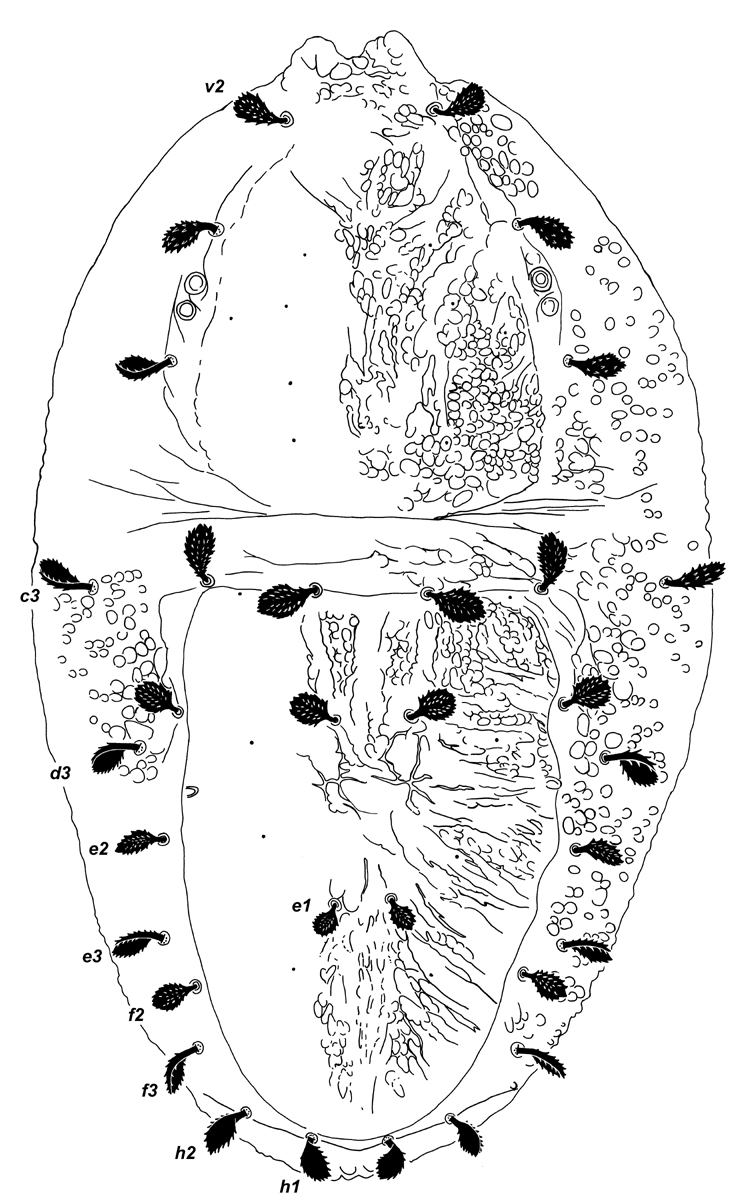Palpipalpus
|
Fig. 1. Palpipalpus hesperius sp. nov. Beard & Seeman, adult female dorsum. |
|
Fig. 2. Palpipalpus hesperius sp. nov. Beard & Seeman, adult female posterior venter. |
|
Fig. 3. Palpipalpus hesperius sp. nov. Beard & Seeman, adult legs I (F= female leg I; M = leg I, note swollen solenidion). |
Key characters
- with the full complement of dorsal setae (Fig. 1)
- e2 and f2 usually inserted in an almost marginal position (Fig. 1)
- h2 not elongate
- anterior margin of prodorsum with pair of rounded lobes forming a shallow median notch anterior to v2 (Fig. 1a)
- ventral and genital plates not developed, membranous (Fig. 2)
- anal plates membranous
- 2 pairs ps setae inserted along median edge of anal plates (Fig. 2)
- the expression of seta v' on trochanter II is delayed until the adult stage (normally expressed in the deutonymph)
- with claw-like true claws
- males with solenidia on palp and tarsi I-II enlarged, swollen (Fig. 3)
Similar taxa
Aegyptobia - with 3 pairs of ps setae; setae e2, f2 inserted in true submarginal position
Crossipalpus - seta f2 absent; without any anterior projections on prodorsum; palp tibia with one seta (two in Palpipalpus); genua I-IV 1-1-0-0 (2-2-0-0 in Palpipalpus)
Meyeraepalpus - with 3 pairs of ps setae; gnathosoma partially concealed beneath prodorsum; e2, f2 in true submarginal position; seta d absent on femur III
Phytoptipalpus - without any anterior projections on prodorsum; seta v' on trochanter II is expressed in the deutonymph
Number of species
One - P. hesperius
Authority
Beard & Seeman
Distribution
Australia
Hosts
Allocasuarina fraseriana, Allocasuarina sp. (Casuarinaceae)
Colour
red when alive
eggs red
Remarks
This is a recently described genus (see Beard, Seeman & Bauchan (2014).


